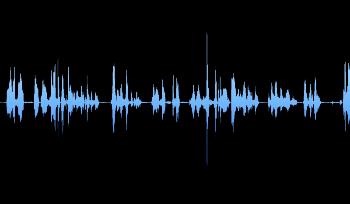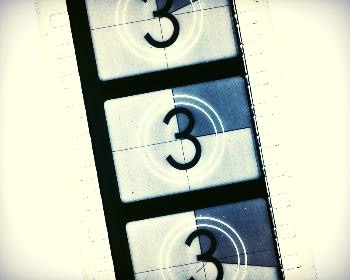

- © 2003 - 2025 Dynamix Productions, Inc. Contact Us 0



Buzz Aldrin subliminally making the flag fly straight.
"Fly straight, you beep flag."
When astronauts first walked on the moon, everyone was glued to the television. I was eight-years-old and can remember it like yesterday.
Beep. Beep.
We copy you down, Eagle.
Beep. Beep.
Engine arm is off. (Pause) Houston, Tranquility Base here. The Eagle has landed.
Beep. Beep.
What the beep? All those old NASA transmissions seem to have that beeping in the recording. What the beep is it? It's actually two, and they're called Quindar tones.

There was a recent AES (Audio Engineering Society) presentation at McGill University in West Montreal, Quebec titled "We Are the Robots: Developing the Automatic Sound Engineer." Brecht De Man from the Centre for Digital Music, Queen Mary University of London discussed the state of automatic mixing. I don't know whether to be happy some automation is on the way, or be alarmed that I may become obsolete.

It's often assumed that someone with a visual impairment, such as blindness, has better hearing. While this person may collect more audible information than most of us, there is no physical advantage over someone with sight. That information is collected by the brain. That person has trained themselves to rely more on the remaining senses.

Most of you reading this know us at Dynamix for creating new sounds with new technology. But did you know we also like to resurrect old sounds? Just twenty years ago, magnetic tapes and records were standard formats we worked with everyday. Now, they're just "antiques" and items taking up space in a closet. But many people are discovering (or re-discovering) analog, and they want it in digital form. For many years, we have been helping people resurrect old recordings by transferring their tapes and records to CD. Many of these analog recordings are of family, but others are important historical archives.
Our main challenge when restoring an old recording is improving the condition of the archive enough to capture an audio signal. Scratches on an old record are obvious, but many are warped, dusty, oily, and even muddy. Reel-to-reel tapes often exhibit "shedding," where the magnetic coating flakes off the acetate base as you play it, destroying it forever. Although not all recordings are recoverable, we've had great success with most. Tapes can be "baked," or slow-heated and slow-cooled to temporarily restore the adhesive that holds the magnetic coating on. Records can be cleaned, and if warped, flattened.
We have a multitude of analog equipment for transferring old recordings, including:


I was recently explaining to our intern about how we used to synchronize sound and film together when I realized how many industry terms are borrowed from other tasks or re-hashed from another era. Most make sense, like "copy," "paste," and "edit." But with others you have to make an association.

The quest to create a 3D visual experience has revved up, sputtered, and stalled for almost a century. But the journey for a 3D experience in sound has steadily evolved for more than eight decades. The early 1930's saw the first experimentation with stereo, and the first feature film to be released in stereo was Disney's Fantasia, in 1940. Ray Dolby introduced the revolutionary and practical Dolby Surround to movie theaters in the 1970's (4 channels: left-center-right-back). The movie-goer was now immersed in sound from several directions. But when they went home, they were limited to a cheap monaural $3 speaker in their television set.
In the 1980's, television stations began broadcasting in stereo, and by the 90's in surround (still only 4-channels). For the average consumer however, having surround sound in the home was costly and reserved for audiophiles. But the new millennium brought maturity of speaker designs that allowed big sound from small boxes. Digital broke down the analog barriers to permit 6, 7, 8 and even 11 channels of surround sound.
Now more than ever, surround sound is accessible to everyone. A show of hands for everybody out there that has surround sound in their homes. I would bet that most of you didn't have it twenty years ago. It's so prevalent today, that it only makes sense to take advantage of it.
One of our services at Dynamix is surround sound. Our control room is set up to mix and deliver up to 5.1 surround. Should you do your next project in surround? It depends on the project and the listener's environment. The chart below offers a quick comparison of suggested final audio formats:

Some notes on the chart above: